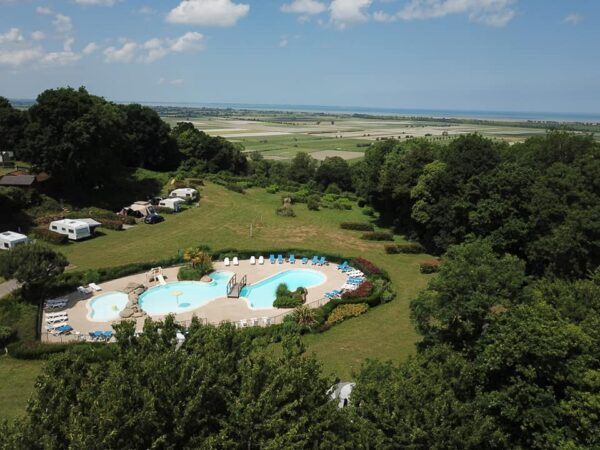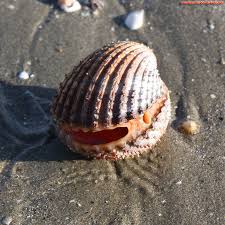The tides at Mont Saint Michel
The tides at Mont Saint Michell
What is a tide ?
Tides are caused by the action of the stars, mainly the moon and the sun. When they are aligned with the earth, the attractions are added, and we are in spring tide, which corresponds to periods of high tide.
On the other hand, if the stars are at right angles to each other, the attractions are reduced, and we are in neap tide, which corresponds to periods of low tide.
These phenomena are accentuated in the Bay of Mont-Saint-Michel, as the rock of the Mont Saint Michel lies at the bottom of the bay, and the sea does not reach it during neap tides.
On the other hand, during spring tides, the sea does reach the Mont, but only 4 hours 30 minutes after the start of the rising tide, approximately every fortnight.

Following the major works undertaken over the last few years, the Mont Saint Michel is once again an island in its own right for a few days each year…
An exceptional phenomenon to be seen once in a lifetime !
How does this work?
These phenomena are accentuated in the Bay of Mont-Saint-Michel, as the rock lies at the bottom of the bay and the sea does not reach it during periods of low water. On the other hand, during spring tides, the sea does reach the Mont, but only 4 hours 30 minutes after the start of the rising tide, approximately every fortnight.
The highest tides occur 36 to 48 hours after the full and new moons. These indications are only approximate and may be affected to some extent by atmospheric conditions. Mont-Saint-Michel is home to the highest tides in continental Europe, with a difference of up to 15 metres between low and high water. During high tides, the sea retreats 15 kilometres from the coast and rises again very quickly.
To observe the phenomenon of the rising tide, you need to be present 2 hours before the times shown on this document, on spring tide days.
It is extremely dangerous to venture into the bay alone, including in the immediate vicinity of Mont Saint-Michel.
What is a tidal bore ?
The tidal bore is a very spectacular natural phenomenon that occurs on around a hundred rivers and bays around the world.
This phenomenon of a sudden rise in the water level of a river or estuary is caused by the rising tide during spring tides. It occurs in the mouths and lower reaches of certain rivers when their currents are counteracted by the flow of the rising tide.
Imperceptible most of the time, it appears at the time of new and full moons.
Where does this phenomenon come from ?
| Tidal bore observation sites : | Recommended time of arrival before high tide |
|---|---|
| Le Grouin du sud à Saint-Léonard | 1h30 |
| Le Rivage à Vains | 45 mn |
| Le Pont de Marcey-les-Grèves | 30 mn |
| Le Gué de l’Epine au Val-Saint-Père | 45 mn |
| Le Pont de Pontaubault | 30 mn |
| La Roche Torin à Courtils | 1h15 |
| Le Mont-Saint-Michel | 2h00 |
Warning: the tide can be influenced by meteorological phenomena.
Wind and atmospheric pressure can change the time and height of the tide.

The tidal bore can be seen on land, from the sea and in the air!
And why not try your hand at surfing or kayaking ?
When can you see the spring tides ?
The biggest tides of 2024
| Date | Coefficient | |
|---|---|---|
| Coefficient morning | Coefficient afternoon | |
| Lundi 8 avril 2024 | 105 | 110 |
| Mardi 9 avril 2024 | 112 | 113 |
| Mercredi 10 avril 2024 | 112 | 110 |
| Jeudi 11 avril 2024 | 106 | 101 |
| Mardi 7 mai 2024 | 98 | 101 |
| Mercredi 8 mai 2024 | 103 | 103 |
| Jeudi 9 mai 2024 | 102 | 100 |
| Mardi 23 juillet 2024 | 95 | 96 |
| Mercredi 24 juillet 2024 | 97 | 96 |
| Mardi 20 août 2024 | 99 | 104 |
| Mercredi 21 août 2024 | 107 | 109 |
| Jeudi 22 août 2024 | 109 | 107 |
| Vendredi 23 août 2024 | 105 | 100 |
| Mercredi 18 septembre 2024 | 107 | 111 |
| Jeudi 19 septembre 2024 | 114 | 115 |
Book your holiday at Camping le Balcon de la Baie
to take advantage of this exceptional phenomenon !
Beware, however, of the “Release of water from the dam on the Couesnon”
Regulated flushing is triggered six hours after high tide.
Each release generates a current that gradually increases to reach a limited maximum flow of 100m3/s after 20 minutes immediately downstream of the dam. This current causes a gradual rise in the water level for around 30 minutes. With this release, the water level of the Couesnon can rise by around 40 cm in the bay and the riverbed can widen significantly. The duration of the flush depends on the amount of water stored and can last between 2 and 5 hours. To find out the time and duration of the day’s and the next day’s releases, look out for the illuminated sign at “La Caserne”, near the dam, along the road leading to Mont Couesnon.
Follow the guide !
Interactive card for foot fishing
In the Bay of Mont Saint Michel, come and look for the treasures of the sea : cockles, clams, wild oysters!
Book your stay and do it yourself !

Plateau de fruit de mer en terrasse au bord de l’eau

